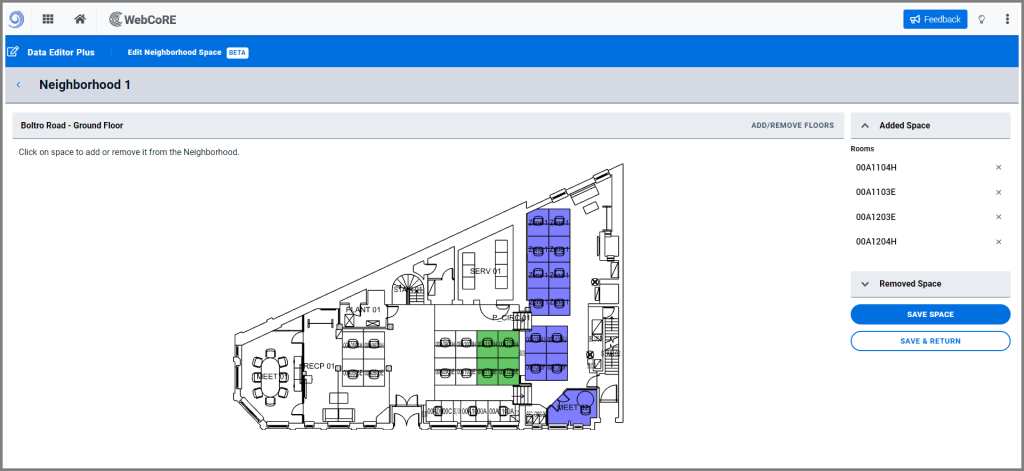Introduction
Office neighborhoods are a growing trend in the flexible space. They’re designed for employees to collaborate and function as one large group instead of having their own individual desks. Office neighborhoods are similar to hot desks but with more structure and support from the company or building owner.
You can think of them as a mix of agile working or activity-based working. Furthermore, neighborhoods allows office workers to mingle with colleagues while still getting your work done on time.
The idea behind office neighborhoods is simple: people who like each other tend to perform better together than they would if they worked apart. For example, engineers tend to perform better when they’re near designers because they can bounce ideas off each other throughout the day without needing an appointment first.
The Best of Both Worlds
Office neighborhoods are a trend in office design that blends the best of activity-based workspaces, dedicated offices and hot desking.
Like a hot desking, an office neighborhood features shared resources like meeting rooms, shared desks, phone booths, and communal areas like lounges and kitchens. In this way, it gives employees access to shared meeting spaces when needed and allows them to have private offices when they want them.
This means that you won’t have to worry about noise distractions or interruptions from your colleagues while working on sensitive projects. But, if you do need to collaborate, spaces are available.
What are office neighborhoods?
Office neighborhoods are a hybrid of traditional office spaces and flexible office layouts. They combine the best parts of private spaces, quiet zones, and open-plan shared spaces for collaboration and team meetings. The idea is to allow employees to choose how they want to work daily. Whether that’s in a private office, open area lounge or conference room—or even outdoors on their own terrace with views of nature!
The result is a flexible workspace that allows employees to be productive in an environment that supports their needs.

What is the difference between agile working, activity-based working and office neighborhoods?
As you may have guessed, there are many similarities between agile working, activity-based working and office neighborhoods. They all offer employees the flexibility to work remotely when they choose to do so.
Agile working is an established company culture that enables employees greater freedom and flexibility in their working lives. The agile culture embraces new technologies offering different choices around where and when to work. Inherently, agile encourages employees to self-manage, shifting focus to productivity and team member contributions. Agile working allows remote working, meaning employees can work from home if they’re able.
Activity Based Working (ABW) supports agile working. It is a new type of office environment that allows employees to decide where, when, and how to perform the work (hybrid working). Activity-based working aims to right-size the workplace and connect users to workspaces based on their needs.
Office neighborhoods support both agile working and activity-based working. Office neighborhoods are groupings of different workstations, collaborative spaces and support spaces. Employees or teams are then restricted to a particular neighbourhood. Each neighborhood contains space that supports the needs of the occupants.
The Benefits of Office Neighborhoods
Office neighborhoods are a way to encourage collaboration, productivity, creativity, flexibility, health and wellness and employee retention—all of which lead to increased employee satisfaction and loyalty. Office neighborhoods also help retain employees by making them feel happy at work.
Benefits Include:
- Increased Employee Satisfaction – There is a direct relationship between the space types employees use and the amount of satisfaction they experience. Employees can choose where and how they work with office neighbourhoods, increasing satisfaction.
- Collaboration & Communication – Office neighborhoods lead to higher impromptu conversations with colleagues. It’s important to note that this isn’t an increase in idle chit-chat but rather an increase in necessary communications. Furthermore, Neighborhoods where collaborative teams are close together experience increases in communication.
- Increased Productivity -Employees report feeling highly productive when their working environment supports different working styles, i.e. open areas for free-flowing collaboration. Private areas for focused work.
- Employee Retention – Flexibility for employees to choose how and when they work is linked to feelings of loyalty to their organisation. Meaning office neighborhoods are likely to lead to reductions in employee churn.
How To Implement Office Neighborhoods
To implement office neighborhoods, your company must create a flexible and adaptable space. You also want to make sure that it will support collaboration and communication between employees. You need to ensure that this type of environment supports the needs of your workforce and your business.
For an office neighbourhood concept to work in practice, it’s important for everyone involved with the project to be invested in ensuring it succeeds.
To create an office neighborhood, you need a clear understanding of your business’s needs. For example, product teams could need a lot of collaboration and brainstorming areas, whereas sales may need private areas to converse with clients. The needs of your teams should be reflected in your workplace design principles. These Principles tell you much and what types of spaces are needed to support your teams.
To create your neighborhood, you should group teams and departments together who use the same types of spaces. However, keep in mind that certain will need to collaborate with others, so locations are key.
How To Monitor & Control Office Neighborhoods
The benefit of office neighborhoods is that businesses can track where employees are, whilst employees have the freedom to choose their working style. For this to be successful, you need a few key things:
- Room/Meeting Room Bookings – Room booking is still essential, although an employee is assigned to a particular area. This way, you can monitor the types of spaces teams use and how often. In addition, employees have peace of mind knowing that they have a place to sit when they go to the office.
- Building Entry Data – This is a quick win as every business will have data on who is coming and going. However, it doesn’t provide detail on space usage. Furthermore, there is the issue of tailgating!
- Sensors – Sensors are useful to see how employees move through the neighborhood and for occupancy. Sensors have the added benefit of anonymity and without relying on people to book space.
- Permission-Based Seating – Using software to manage your neighborhoods like WebCoRE, you can restrict access so employees can only book space in the office neighborhood you are assigned to.
- Periodic Surveys – WIth booking and sensors, you get the ones and zeroes. What you lack is the human side. By meeting with department heads occasionally, you gain insight into how teams cope and any issues they may have.
Conclusion
Office neighborhoods are a great way to bring people together and promote collaboration. They can help reduce stress, increase productivity, and improve your employee’s health. If you want to make your office more efficient, consider implementing office neighborhood concepts!
With the latest version of WebCoRE, our customers now have access to a new way of grouping their workspace into ‘Zones’, ‘Neighbourhoods’, or whatever you want to call them! Users can create a new layer of space groupings for any room or agile/flexi area on a floor plan.
Users can set a name for their neighborhood, assign it a colour and link it with fixed or collaborative workspaces, as well as Agile/Flexi Areas or any circulation space. These Neighbourhoods/Zones can span multiple floors within a chosen building, so there’s no need to set up separate ones for your different floors.






